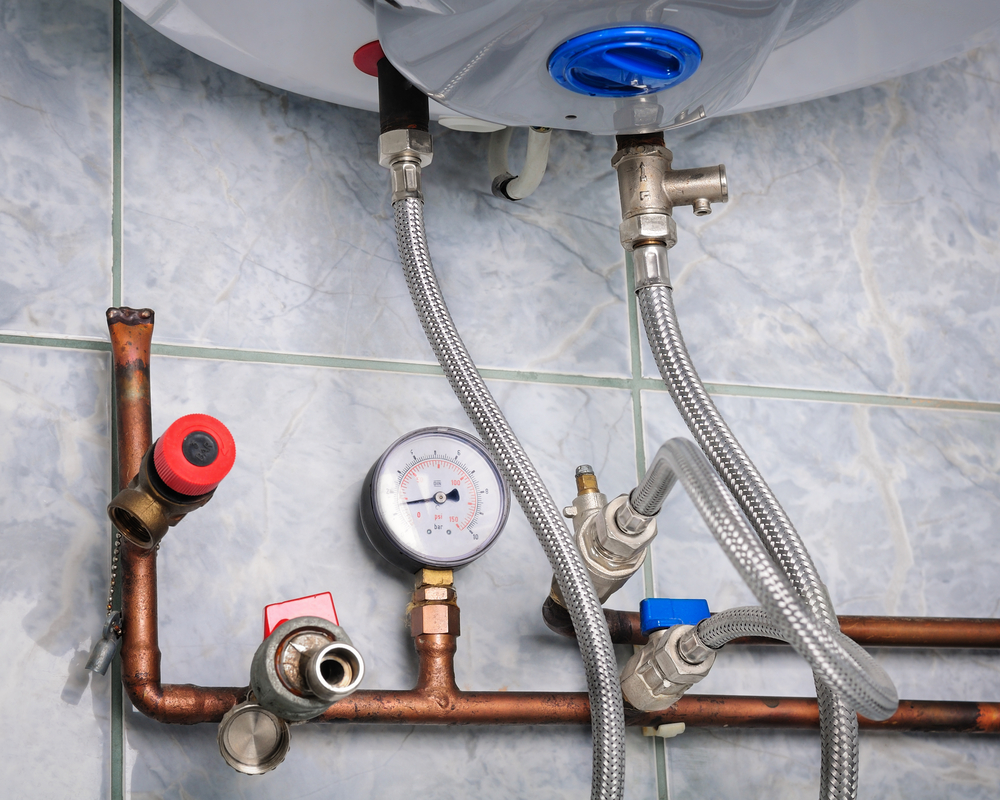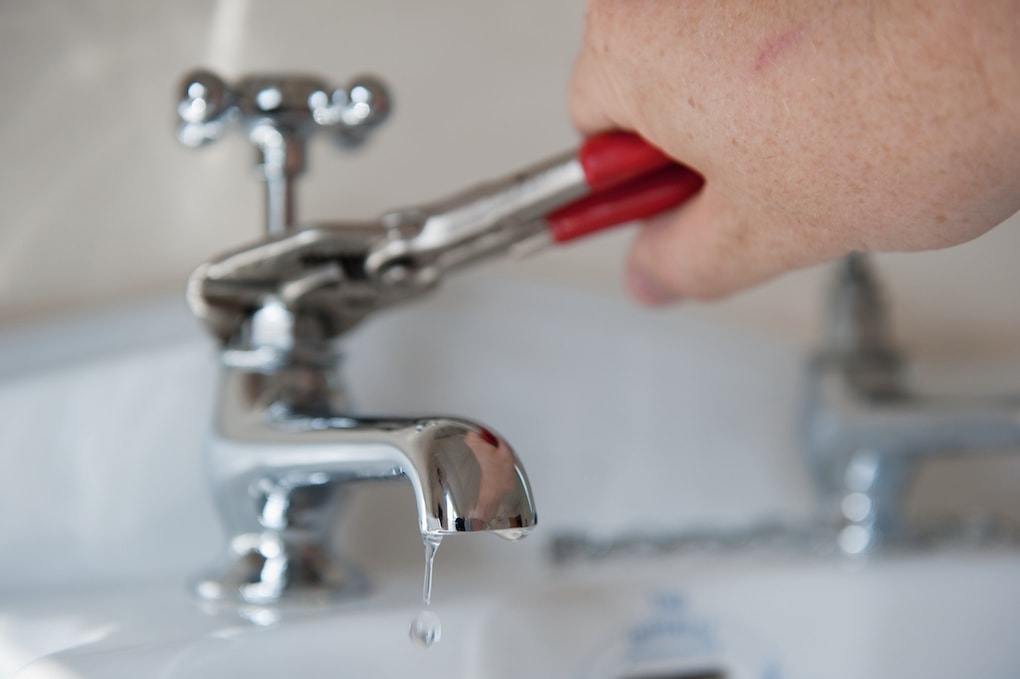Effective Tactics for Addressing Low Water Pressure in Your Home
Effective Tactics for Addressing Low Water Pressure in Your Home
Blog Article
Do you find yourself interested in ideas on 4 Ways to Troubleshoot Low Water Pressure?

Low tide stress in your home can be an aggravating trouble, affecting whatever from showering to cleaning meals. If you're experiencing weak water circulation, there are a number of feasible reasons and options to check out. In this guide, we'll discuss common factors for low water stress and useful actions to deal with the issue properly.
Introduction to Low Tide Pressure
Low tide stress occurs when the flow of water from your taps, showers, and other fixtures is weak than usual. This can make day-to-day jobs more challenging and much less efficient. Comprehending the reasons for low water stress is critical to locating the appropriate solution.
Typical Sources Of Low Water Stress
Pipe Obstructions
Gradually, pipelines can come to be blocked with natural resource, sediment, or debris, restricting the flow of water. This is an usual issue in older homes with galvanized steel pipelines.
Deterioration
Deterioration within pipelines can result in leaks and minimized water pressure. Corrosion buildup can constrict water circulation, especially in aging plumbing systems.
Faulty Pressure Regulators
Pressure regulatory authorities are responsible for keeping constant water stress in your house. If they malfunction, it can cause low water pressure or uneven flow throughout your house.
Local Supply Of Water Issues
Often, the issue lies outside your home. Metropolitan water supply concerns, such as main line leaks or maintenance work, can briefly reduce water stress in your location.
How to Identify Low Water Pressure
Checking Taps and Components
Start by evaluating the water stress at different taps and components throughout your home. If the problem is separated to certain locations, it may indicate localized issues.
Checking Pipes
Examine visible pipes for signs of leakages, deterioration, or blockages. Take notice of any type of unusual audios, such as banging or rattling pipes, which might indicate issues within the plumbing system.
Consulting with a Plumber
If you're unable to pinpoint the source of low tide stress, consider employing a professional plumber to perform an extensive assessment. They can recognize underlying problems and recommend proper services.
DIY Solutions to Fix Low Water Pressure
Cleaning Up Aerators and Showerheads
Natural resources can accumulate in aerators and showerheads, lowering water flow. Remove and cleanse these elements regularly to boost water pressure.
Flushing Hot Water Heater
Debris buildup in the water heater can limit circulation and minimize efficiency. Flushing the storage tank periodically helps eliminate sediment and keep optimal efficiency.
Inspecting Stress Regulatory Authority
Make certain that the pressure regulatory authority is operating properly. Changing or replacing the regulator can assist recover appropriate water stress throughout your home.
Clearing Up Clogs in Water Lines
For minor clogs, attempt utilizing a plumbing serpent or chemical drain cleaner to clear obstructions in pipelines. Beware when using chemicals and comply with security standards.
When to Call a Specialist Plumber
If DIY efforts fail to fix the problem or if you suspect substantial plumbing issues, it's finest to seek help from a certified plumber. They have the knowledge and tools to resolve complex issues safely and successfully.
Preventive Measures to Keep Water Stress
Regular Maintenance
Schedule regular upkeep for your plumbing system to stop issues such as deterioration, leaks, and obstructions. Resolving minor issues early can aid stay clear of more considerable repairs in the future.
Installing a Pressure Booster
Take into consideration installing a pressure booster pump to improve water pressure in areas with consistently low circulation. This can be particularly useful for multi-story homes or buildings with high-demand components.
Surveillance Water Use
Be mindful of water usage habits and stay clear of overtaxing the plumbing system. Simple changes, such as staggering showers and laundry lots, can assist preserve sufficient water stress.
Final thought
Taking care of low water pressure can be aggravating, yet determining the underlying reasons and carrying out appropriate remedies can bring back optimum circulation throughout your home. Whether it's cleaning aerators, evaluating pipelines, or seeking advice from a plumber, taking aggressive actions can make certain a stable supply of water for your everyday requirements.
FOUR WAYS TO FIX LOW WATER PRESSURE NOW
Turning on a shower or faucet only to find the water comes out in a sad, slow drizzle is never a good feeling. How exactly are you supposed to wash a pan or take a quick shower when it takes 10 minutes just to rinse off a little soap? The good news is that when your water pressure is bad, there's always a cause: typically one that can be easily fixed. Here are some of the most common causes of low pressure and what you can do to fix the issue:
DEBRIS AND MINERAL DEPOSIT BUILDUPS
If you notice low water pressure from just one or two of the fixtures in your house, the problem likely has to do with debris buildup. Water is full of minerals and other debris, all of which can accumulate in your pipes and on your fixtures. This can cause a blockage that affects how much water flows through. To fix this, try filling a small plastic bag with white vinegar, and use a rubber band to hang it around your showerhead or faucet. Let the head of the fixture soak for a few hours, and the vinegar should loosen the deposits.
WATER LEAKS
Leaks are another common cause of low water pressure. If water is flowing out of your plumbing through a hole or crack before it can reach your fixture, the pressure coming out of the faucet or showerhead will be lower. A plumbing professional is your best bet for finding and repairing a leak in your water supply pipes.
Leaks are another common cause of low water pressure. If water is flowing out of your plumbing through a hole or crack before it can reach your fixture, the pressure coming out of the faucet or showerhead will be lower. A plumbing professional is your best bet for finding and repairing a leak in your water supply pipes.
FOUR WAYS TO FIX LOW WATER PRESSURE NOW
Turning on a shower or faucet only to find the water comes out in a sad, slow drizzle is never a good feeling. How exactly are you supposed to wash a pan or take a quick shower when it takes 10 minutes just to rinse off a little soap? The good news is that when your water pressure is bad, there's always a cause: typically one that can be easily fixed. Here are some of the most common causes of low pressure and what you can do to fix the issue:
DEBRIS AND MINERAL DEPOSIT BUILDUPS
If you notice low water pressure from just one or two of the fixtures in your house, the problem likely has to do with debris buildup. Water is full of minerals and other debris, all of which can accumulate in your pipes and on your fixtures. This can cause a blockage that affects how much water flows through. To fix this, try filling a small plastic bag with white vinegar, and use a rubber band to hang it around your showerhead or faucet. Let the head of the fixture soak for a few hours, and the vinegar should loosen the deposits.
WATER LEAKS
Leaks are another common cause of low water pressure. If water is flowing out of your plumbing through a hole or crack before it can reach your fixture, the pressure coming out of the faucet or showerhead will be lower. A plumbing professional is your best bet for finding and repairing a leak in your water supply pipes.
Leaks are another common cause of low water pressure. If water is flowing out of your plumbing through a hole or crack before it can reach your fixture, the pressure coming out of the faucet or showerhead will be lower. A plumbing professional is your best bet for finding and repairing a leak in your water supply pipes.
A VALVE ISSUE
If you have low water pressure throughout your home, check your main shut-off valve to make sure it's completely open. You may also want to see if there's a pressure-reducing valve installed. If there is, have a plumber help you adjust the settings to get the pressure you're looking for.
OTHERS USING WATER
Believe it or not, your low water pressure could be caused by your neighbors. If you notice low pressure at certain times of day, it may be because you and the people living next to you have similar schedules - when everyone is showering at the same time, the pressure will be lower in every home. Low pressure throughout the neighborhood may also be caused by an issue with your municipal water supply. If that's the case, call the supplier to see if they're working on the issue.
https://www.rotorooter.com/blog/water-leaking/low-water-pressure-fixes/

Hopefully you enjoyed our post about 9 Reasons for Low Water Pressure in Your House. Thanks for spending some time to read through our post. Sharing is caring. Helping others is fun. Kudos for being here. Kindly come by our site back soon.
Automated Marketing Report this page